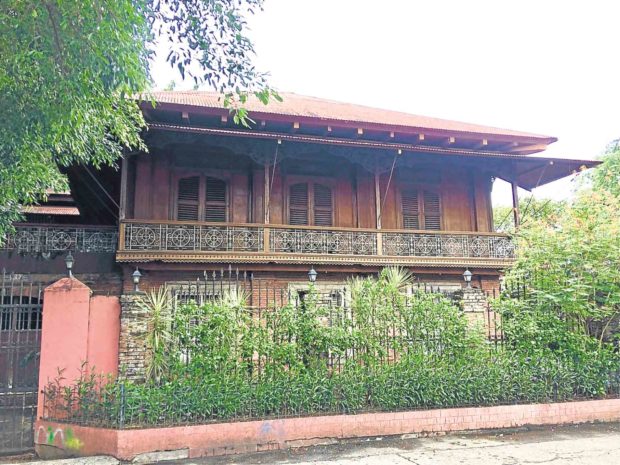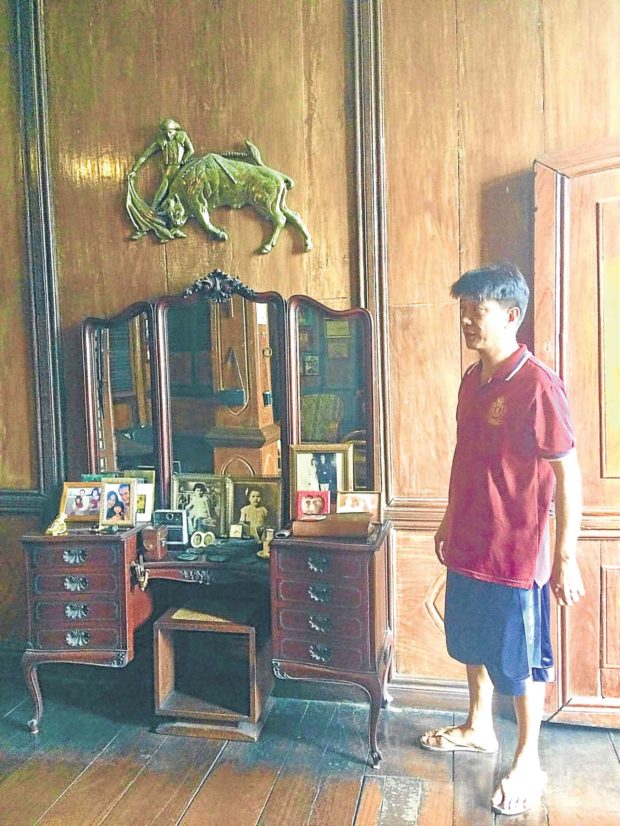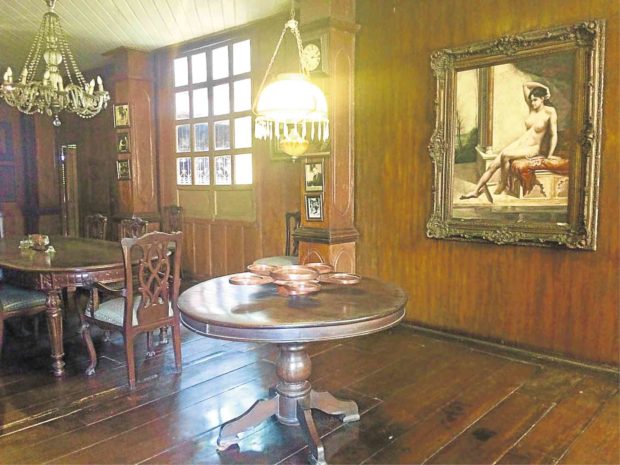Casa Mariquit: A walk back in time

‘BAHAY NA BATO’Casa Mariquit, a “bahay na bato” (house of stone) on Sta. Isabel Street at Jaro District, is not as imposing as other houses of the old rich in Iloilo City, but it is well-preserved and tells the story of the Javellana and Lopez families. —HAZEL P. VILLA
ILOILO CITY — The moment you step into the “silong” or basement of the 215-year-old Casa Mariquit, be ready to be transported back in time.
Probably one of this city’s best kept secrets, the Spanish colonial ancestral house, commonly called “bahay na bato” (house of stone), has visitors coming out with a mix of stories, experiences and appreciation.
Either their hairs stand on end from the caretaker’s ghost stories or they may have been spooked by an Amorsolo painting of Don Fernando Lopez, which seems to follow them with his eyes, or by the eerie chimes of an antique grandfather clock.
But most come out appreciative of Ilonggo architecture and heritage, as well as the history of the Ilonggo old rich Javellana and Lopez families, upon leaving the home of Maria Salvacion “Mariquit” Javellana-Lopez, the wife of Fernando Hofileña Lopez Sr. who served as Vice President of the Philippines for three terms—1949-1953 under Elpidio R. Quirino and 1965-1969 and 1969-1972 under Ferdinand E. Marcos.
Photos of visitors come out well when they pose beside the doors of solid yakal and among its fretwork of solid wood with carvings.
Article continues after this advertisementThe wide windows and “ventanillas” (little windows) serve as perfect photo frames, as well as provide lighting in the sala and rooms, and good ventilation.
Article continues after this advertisementCorner property
Casa Mariquit is neatly tucked at a corner of Sta. Isabel Street in Jaro District behind a gasoline station and a huge banyan tree.
The property is only 2,000 square meters and the double-story house occupies a mere 600 sq. m., according to 44-year-old caretaker Morel Ferrer.
But its size does not take away the fact that the city knows that its Inday Mariquit, daughter of banker Ramon Javellana, was married to one of the Philippines’ richest and powerful men.
After all, Fernando Sr., whom Ilonggos lovingly called Toto Nanding, built an empire with his brother Eugenio, comprising ABS-CBN Corp. (Fernando Sr. was chair from 1986 until his death in 1993), Manila Chronicle and Meralco, aside from vast landholdings and other agro-industrial interests.

Morel Ferrer, who has been caretaker of Casa Mariquit since 1996, shows visitors a dresser in one of the bedrooms. —HAZEL P. VILLA
Casa Mariquit pales in comparison to the far grander manors and mansions of the city’s old rich, such as Nelly Gardens (owned by Don Vicente Lopez and his wife, Doña Elena Hofileña and built in 1928) that sits on 2 hectares, and the opulent Lizares Mansion (built in 1937 by Don Emiliano Lizares for his wife Conchita Gamboa) that has three floors, attic, basement and 59 doors, most of which are made of glass.
Though much smaller, Casa Mariquit has not fallen into disrepair. It is considered well-preserved as the current owner happens to be Inday Mariquit and Toto Nanding’s great grandson Robert Peña Puckett, president of Solar Electric Co. Inc., who had the house restored in 1993 after Fernando Sr.’s death.
“I want to maintain the history of the Javellanas and the Lopezes. I have learned to love this house like it is my own,” said Ferrer, the guide, caretaker, maintenance man, electrician and security, all rolled into one, since 1996. He lives in a house behind Casa Mariquit with his wife Arleen and their two children.
Maintenance money
The place is open from 8 a.m. to 5 p.m., and the P50 entrance fee is used to maintain the house, Ferrer said.
Visitors do not come often so the caretaker sometimes use his own money to buy light bulbs, floor wax and other cleaning materials.
From the silong (ground floor), one goes up a grand staircase made of thick and still-gleaming Philippine mahogany to reach a small museum to the left that shows two desks owned by the former vice president.
One desk has a gavel, a seal and notebooks with the penmanship of Fernando Sr. Behind it is his bust and portrait painted by Fernando Amorsolo.
In the small museum to the right are two full-body portraits of Toto Nanding in a barong and Inday Mariquit in a terno, and a 1901 model of a Kienzle grandfather clock that still tells time.
The master bedroom, dining room and small family chapel are a walk back in time to 1803 when Don Ramon first built the house. There are antique wall clocks, wooden and chipped chess boards, leather bags, faded magazines, a phonograph and old cameras on top of black-and-white photographs, portraits and paintings.
Mariquit’s family also owned a telephone and a gramophone, all in great shape and spotless.
Secret vault
One of the interesting features of the master bedroom are the wooden floor planks, which conceal a vault installed in 1910 to keep Don Ramon’s wads of cash and coins that he lent to other “hacenderos” (sugarcane planters).
As the story goes, his wealth multiplied further when he would seize the property of other hacenderos if they failed to pay back.
While some restoration has been done, Ferrer said the original red bricks and wooden architecture have been preserved.
The bricks were made at the factory of Don Julio Javellana, Mariquit’s grandfather, in La Paz District and “cemented” with egg white.
According to Ferrer, the adhesive was made of ash, ground rice, egg white and beach sand that were supposed to make the bricks “bawod” (flow), instead of crumbling, in case of earthquakes.
Unfortunately, birds found the mixture tasty and started pecking at it, forcing Ferrer and Puckett to cover the original adhesive with cement mixture to protect and preserve the bricks.
Mariquit died in 1999 at the age of 95. But neighbors have claimed she could be seen occasionally visiting the house of her childhood where, from the ventanillas, she could be seen smiling wanly at passersby.
